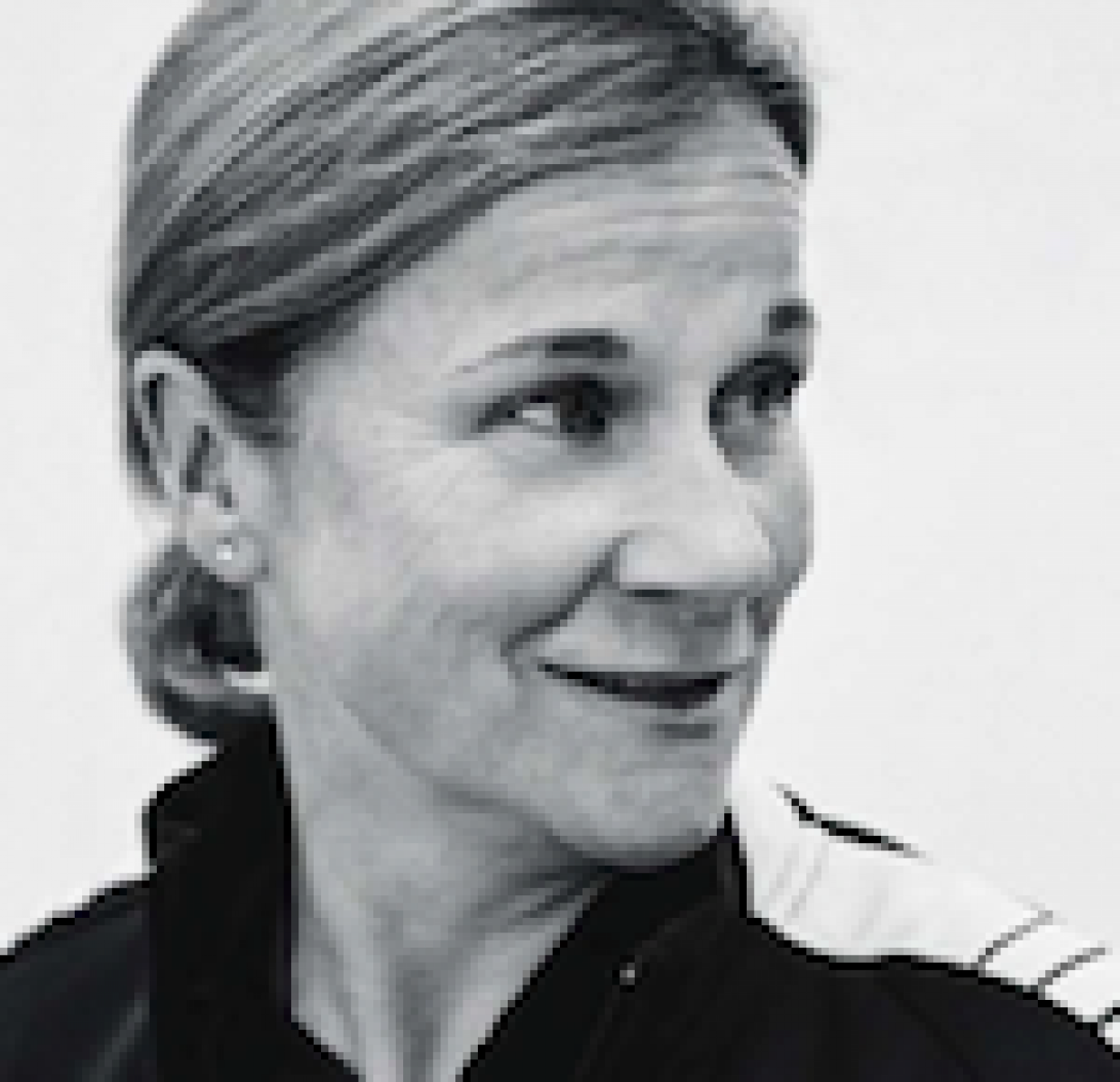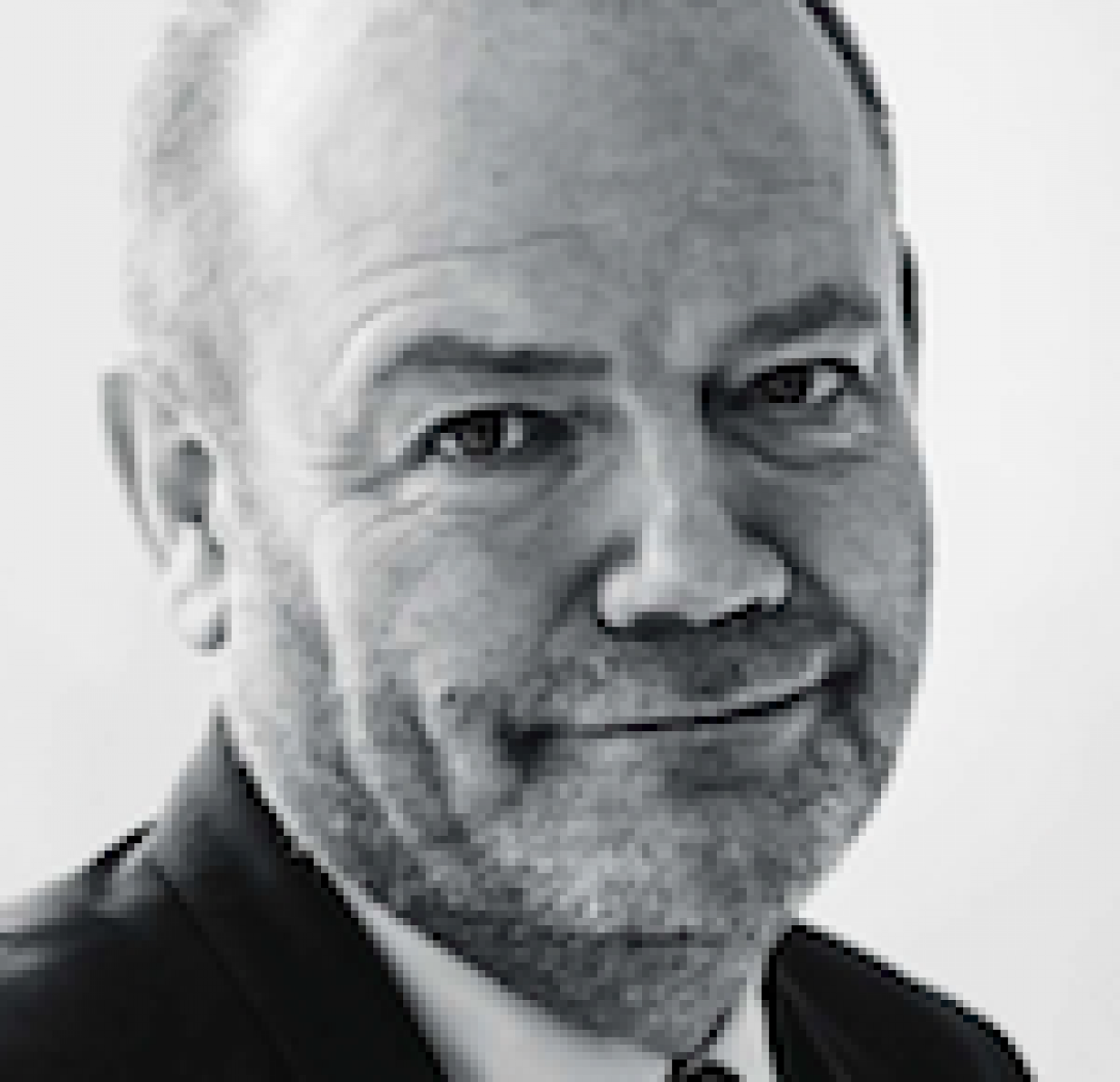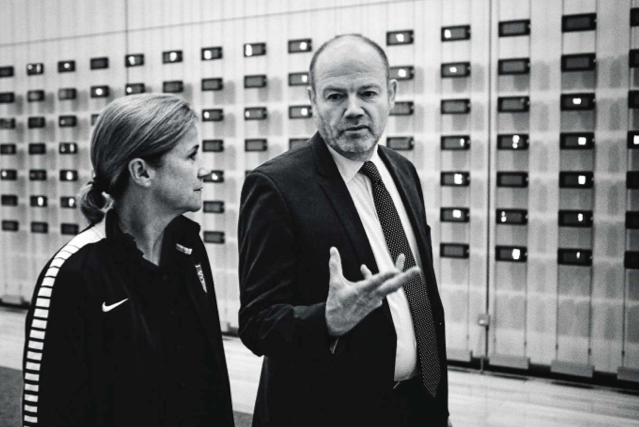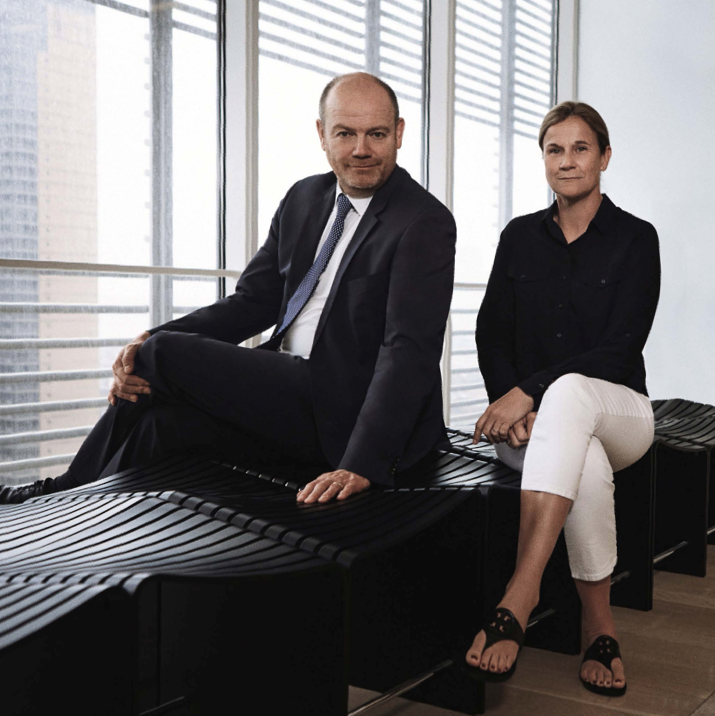What does it take to lead a team to victory on a playing field that’s rarely level and where global developments are constantly shifting the goalposts? U. S. Women’s National Soccer Team head coach, Jillian Ellis, and the president of The New York Times, Mark Thompson, discuss the need to blend patience with impatience, the importance of self-belief, and the role of star players in their different arenas.
Mark Thompson: With just a few days to go before the women’s World Cup, I can’t begin to imagine the kind of pressure you must be under, particularly on a game day when everything is decided within the pressure cooker of ninety minutes!
Jill Ellis: I think the game-day situation is what you live for – that’s the adrenaline rush. Pressure means for me that there is an expectation, and that’s what I thrive on. I love having expectations. I think that’s why you go into coaching, because you’re naturally competitive and you’re drawn to leadership.
Thompson: Yes, people who don’t like stress, who don’t like high-tension moments, and who don’t like conflict, don’t end up doing jobs like ours, so there must be something in our makeup which get us here.
Ellis: I think leading is also about having a very clear sense of your own identity, of your values, and of what you want to achieve.
Thompson: But don’t you think the nature of leadership is changing – becoming less autocratic? I grew up in another era of newsrooms, with screaming and shouting – what we once considered leadership behavior. And that stuff doesn’t work anymore. People don’t want weak leaders; they want clarity, but they definitely want the relationship to be one of mutual respect. Millennials and college-age kids quite rightly won’t put up with a lack of respect.
Ellis: Well, we still have some pretty autocratic coaches out there, but I think players today – and they are mostly Millennials – are more educated about the game. For me, coaching today is a lot like parenting – it’s being able to throw your arm around someone, and it’s also being able to kick them in the tail a little when they need a push. It’s about empowering them and helping them believe in what they’re doing. I think leadership now is about connecting, about that human touch. It’s the human element of leadership that matters most.
For me, leadership has three dimensions: it’s about connecting with my players and understanding the fabric of the people I work with. It’s also having a direction, a focus of where you’re taking this team. And the final thing is that I’m always humble enough to keep coming back to self-reflection, fine-tuning, honing, taking the things I like and moving forward. Those are the three key elements of leadership in spearheading a team towards a chance to win a World Cup.
“It’s really important to define roles and responsibilities and expectations, because otherwise you can have eleven individuals on the field.”
Jillian Ellis, U.S. National Women's Soccer Coach

Thompson: I suspect that the casting of a team of management leaders has quite a lot in common with the way coaches think about their team on the pitch: negotiating the balance between a brilliant maverick, the great team worker, and the culture of the team itself …
Ellis: For me, managing those mavericks or outliers can be as simple as putting them on the bench – that’s a good technique for getting their attention. Or it can be giving them more responsibility to try and get them to buy in, for instance by putting the captain’s armband on a player to show them that they’re not just responsible for themselves – they’re responsible for the whole. But ultimately everybody wants to be on this team, and so they have to understand what it takes to be a part of it.
Our fitness coach likes to quote Sir Dave Brailsford and his philosophy of the “aggregation of marginal gains.” I love that because it refers to the constant need to refine and improve, and the difference that details can make. I don’t know if that’s similar to your world, but in soccer the most minor details can affect success or failure.
Thompson: That’s true. Sometimes success comes through a breakthrough – like in 2011 when The New York Times launched a digital subscription model which has made a huge difference. Much more typical, though, is trying to figure out a way of doing twenty things, each of which brings maybe just a fraction of a percent of gain, but which together can be transformational. So you need both approaches in mind: you need the big breakthrough but also the relentless pursuit of those marginal gains.
Ellis: My players are high achievers by nature, so they want somebody who can help them get to the next level. Sometimes it’s about pushing, and sometimes it’s pulling, but it’s a question of finding a strategy – and how you communicate that is critical. It’s always about trying to expand their comfort level. They’re constantly looking to the next tournament, the next game, to improve. For me as a coach, it’s about helping them acquire the necessary skill set. That’s part of the leadership that I have to offer.
“If you’ve got the right talent, you’ll probably succeed. So a very big part of my job is trying to make sure we’ve got the right talent.
Mark Thompson, President and CEO of The New York Times Company
Thompson: Another thing that I’ve learned – and I learned this the hard way by making the mistake of trying to do everything myself – is that a lot of what a leader does, at least in my arena, is to create a safe space for other people’s talent. So in a way, you’re there to clear the room for them, so they can do their best work.
Ellis: Absolutely. I spend a lot of time watching other coaches work, and what I’ve learned is that they all have coaches per line, making sure that every individual has an opportunity to connect with a staff member. Because the amount of detail involved in this job and the scale of the expectations means you have to trust those around you. Delegating is a big quality in leadership, which means building trust, letting people perform, and supporting them.
Thompson: And yet, we all have such big expectations of those around us, as well as of ourselves. It’s something of a paradox, isn’t it? Because having patience with people is important, but impatience is also very important …
Ellis: I’m not a naturally patient person in my everyday life. I do have very real expectations, and I won’t lower those in terms of where I want to go. But I’m also patient in getting people through a process to try and achieve something. When you’re building something, you have to recognize where you’re headed and understand that there are steps that you need to take in order to get there.
Thompson: Here at The New York Times we’re in a middle of an enormous structural change in our industry. Fundamentally our consumers are changing their behavior, consuming news in ways which are very challenging for the organization. And yet, many people’s first instinct is to freeze up like a rabbit in the headlights, because the necessary change is so daunting. So part of what we have to do is be impatient and drive people towards change. But you’re right in saying that once you’ve set a course, you’ve got to let people travel that road for themselves.
Ellis: It’s also about confidence and preparation. There is a process in place, but my job is making sure that all the pieces understand how they work together. On game day, it’s just about tweaking things and giving specific tactical information, but it’s all the preparation that gives me confidence – the whole buildup in making sure your players are ready for every scenario. That’s the stage at which we’re patient in terms of making sure that they truly understand their roles. And then they have to execute under very real pressure.
“Leadership often is not memos or strategy documents; it’s wandering around talking to people, trying to catch people before they fall, trying to spot who’s in the groove and who’s not.”
Mark Thompson

Thompson: It’s interesting that you talk about confidence. I think confidence for a team is an outcome of a number of things. Success is really important. It’s very hard for a group of people to feel confident when they take one knock after another. So you’re looking for ways in which they can be successful and for moments of real success. And the celebration of success is important – taking a moment to reflect on success – which, believe it or not, is not such a strong tradition in the media sector. We’re pretty good at worrying ourselves silly about the future, and not always good at reflecting on how much we’ve already achieved. But I’d say that personal confidence, personal resilience and – this may surprise you – cheerfulness are really important qualities.
People always assume that senior leaders of companies should be great strategists and incredibly intelligent and thoughtful about analyzing their business. In many ways, though, resilience and cheerfulness matter more than intelligence in terms of giving other people a sense of a center of confidence which they can join.
Ellis: I’d agree. When I was a younger coach, I often heard players say: “My coach doesn’t believe in me. I don’t have confidence.” But I’ve always thought that what counts is innate self-belief. A few years ago, in a different role, I asked several of the players on this current team: “What are the three or four qualities that helped you get to where you are?” What they all had in common was the self-belief or grit that I believe allowed them to get to this level. So as a coach it’s about getting them to espouse my belief in them, so that they can find their own inner confidence and believe that they can do it.
Thompson: But when a game starts, the coaching with all the strategy and the planning comes to a full stop. Then it’s the players who have to make the split-second decisions on the pitch. And you’re standing on the sidelines, watching … I don’t know how you bear that.
Ellis: Part of it is about selecting the right players – players that make the decisions, players that have that self-belief and confidence. I naturally recruit and retain those types of players. But it’s also about empowering them so that on game day, they can make those decisions. Our training environment is very much a simulation of game day in terms of expectations and quality and the things we do. We try and simulate that as much as possible, so on game day they make their decisions.

Thompson: I guess you could say that in business, every day is game day. There are real transactions, real activities, and people on Wall Street keeping score every day. But we also go through periods where the team comes up with a new set of ideas, maybe some new products to launch or innovations to put into effect. Then, like you, we try to anticipate and simulate, test, experiment, and then deploy. So it builds up to a kind of climax when we’re actually sharing something with our readers. For example, the re-launch of The New York Times Sunday Magazine. Maybe these moments are our game days.
Ellis: How do you measure success in what you do? The scoreline means it’s black-and-white for us, but for you, I imagine, it’s very nuanced at times.
Thompson: In some ways there’s a very simple way of looking at our success. Are our total sales over a year increasing or decreasing? And are we profitable? As our business changes, very profitable forms of print revenue fall away and we have to offset that by finding new sales. We’re trying to create new businesses, but can we make our new businesses successful and manage costs? So you could say that our top-line sales and operating profit are like your scorelines. But there’s much more to it than that. One very real question for us is: are we still attracting the best talent? With journalists, the answer is that we still have an incredibly strong position. But we also need some of the best computer scientists and software engineers in the world. How good are we attracting that talent? Because, exactly like in your business, if you’ve got the right talent, you’ll probably succeed, and if you haven’t got the right talent, nothing else you do will work. So a very big part of my job is trying to make sure we’ve got the right talent, and in particular, the right leaders.
“Coaching is a lot like parenting, it’s being able to throw your arm around someone and it’s also being able to kick them in the tail a little bit when they need a push.”
Jillian Ellis
Ellis: We’re constantly searching the landscape for new players. Like in your situation, the type of people we’re looking for are those with very special qualities. There are a lot of good soccer players out there, but what unique skill set do they bring to the table that can help push us on a little bit further? The challenge for me is that I’ve inherited a very successful team, so now how do we build on the excellence that’s already established – which is probably similar to where you’re at.

Thompson: The problem is that most organizations, most human beings, don’t like change. The tendency in organizations is to underestimate the amount of change required and therefore to underestimate the extent to which they need new people with new skills. We need hundreds of people in our newsroom who’ve got quantitative skills, who understand how to market and develop audiences for stories, as well as to write them. That’s a very different skill set, and one question for us is: can we work with the great talent we’ve already got, which is existing talent with existing skills, and can we help them gain the new skills that they need? It’s very important you don’t give up on your existing talent; you’ve got to give them a chance to show what they can do.
Ellis: It’s a constant cycle for us, too. Ultimately, if you can survive in our environment and do well, you belong, regardless of whether you’re coming out of college or you’ve been on the team for ten years. The interesting thing about the culture and the climate on our team is that our existing players welcome the younger players in. They recognize that new talent can help them be successful, so there’s no animosity and the existing squad will help bring along the younger players.
Thompson: It sounds like you’re at a very interesting point now with the team, which is made up of some extremely experienced players and some very fresh talent. And how those two groups work together is obviously critical to the team’s success.
Ellis: It is. And sometimes it is all about blending them – whether it’s bringing them together as roommates, or getting the older players to act as mentors. Going to this World Cup, I know that I need some experience for that first game, because for the younger players, it will be their first time there. So applying leadership and experience to mesh them together is very important for our success.
Thompson: One interesting thing that’s happening to us is that newspapers used to be a very stable industry and everyone could just do what they do in their own area of the paper. So the newsroom would do the news, the sales department would sell advertising, and the guys in the print works would make the paper. And they didn’t have to have very much to do with each other. But it’s not like that anymore. This may sound crazy, but over the last couple of years we’ve been experimenting for the first time with much deeper teamworking. So, if you’re creating a new product, you’ve now got not just a great journalist and editor, you’ve also got a graphic designer, some engineers, people from marketing and advertising – all working together to create something. It’s like a new set of muscles; the organization is really just learning about that.
Ellis: So everybody has a common goal and needs to have a stake in it now. The synergy is critical, right?
Thompson: That’s it. And we have to contend with a very star-driven culture. Trying to align that with effective teamwork, so that there’s some give and take and respect for other people’s contributions – that’s a very big challenge for us, but very much what you must have to live with all the time.
Ellis: It’s about allowing those outliers, who maybe don’t want to conform to the team, to have their individuality, but also about how much you are willing to give to keep them. You need to allow the special qualities to shine, but it’s also really important to define roles and responsibilities and expectations, because otherwise you can end up with eleven individuals on the field. But the beauty of our sport is that one person can’t do it alone – it’s a combined effort.
About Jillian Ellis
Ellis is widely considered one of the finest soccer coaches in the world, and having just won the World Cup with the U. S. women’s team, she is very much at the peak of her profession and career. She was born in 1966 in Portsmouth, England, where her father John Ellis was a longtime soccer ambassador for the British government, and founder of a U. S.-based soccer academy where Jillian’s brother still coaches. She achieved tremendous success at the head of the UCLAwomen’s soccer program and served in various capacities for the U. S. Soccer Federation before becoming head coach in May of 2014. Prior to that, she twice served as interim head coach for the USA. As someone so active in youth soccer development, Ellis has the personal distinction of coaching many age group national teams for the United States and therefore at one time or another, coached almost every woman currently on her team.
About Mark Thompson
Thompson has risen quickly through the ranks of journalism to hold two of the most prestigious jobs in the English-language news world. Born in England in 1957, Thompson graduated from Oxford and soon joined the BBC. He worked in a variety of jobs there, and earned the distinction of being Editor of the Nine O’Clock News at the age of 30. Thompson was appointed to the top job – Director General – in 2004, where he stayed until accepting a new role at The New York Times in 2012. During his tenure, the BBC revamped its website, increased its digital offerings, and introduced technology that allowed viewers to watch programs on digital devices. Arthur Sulzberger, publisher of the family-owned New York Times, hired Thompson not least due to his familiarity with digital strategy and implementation.
PHOTOS: CYRILL MATTER
Players that make the decisions, players that have self-belief and confidence, those are people that you want in your squad.
Jillian Ellis
If you’ve got the right talent, you’ll probably succeed. So a very big part of my job is trying to make sure we’ve got the right talent.
Mark Thompson





